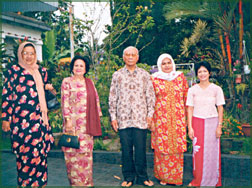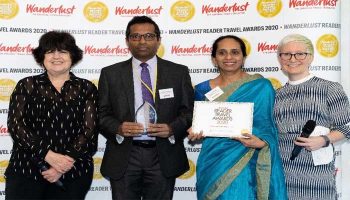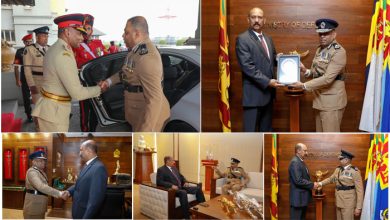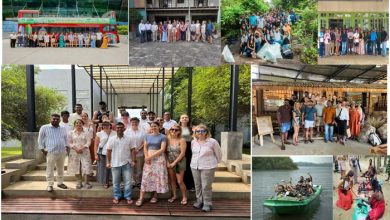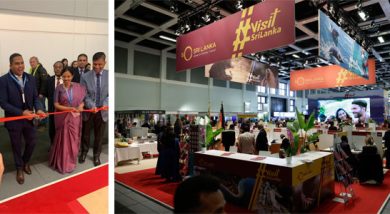Disaster-Response, Recovery and Resilience Building of Sri Lanka Tourism against Coronavirus COVID-19
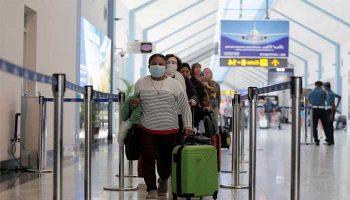
“Sparking Green Light at the End of the Dark Tunnel”

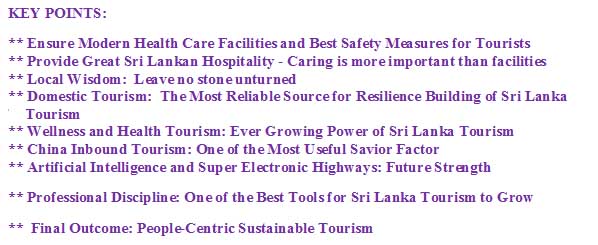
The Tasks Ahead
Post Recovery Strategies:
It is no doubt that the COVID-19 Pandemic has made an unexpected huge disaster thrashing the prevalent impressive recovery of Sri Lanka Tourism after the Easter Sunday Terror Attack on 21 April 2019.
At present, Sri Lanka Tourism must successfully address three major areas in order to correctly response and recovery from the impact of the COVID-19 Pandemic:
- Estimate the intensity and gravity of the impact of the COVID-19 Pandemic on Sri Lanka Tourism
- Implement most suitable measures to provide necessary assistance and to compensate the suffered victims of the industry at the Response Stage of the COVID-19 Pandemic Disaster
- Design the Post-Recovery Strategies of the COVID-19 Pandemic for development of Sri Lanka Tourism to the best suitable pinnacle of global tourism
Battered Global Tourism:
Tourism is a multifaceted and interconnected industry. It has a significant backward and forward linkages with direct, indirect and induced impacts to the economy and society.
By the end of 2019, global tourism has become the 3rd highest GDP contributor to the global economy, representing more than 10.4% of total world GDP. The total international tourist arrivals have exceeded more than 1.4 billion and tourist tourism receipts could exceed more than USD 1.7 trillion. In general, Travel & Tourism industry generates 1 in 10 jobs (319 million) worldwide. In 2019, the Travel & Tourism industry was one of the fastest growing industry in representing 3.9%, outpacing the growth of global economy (3.2%) for the eighth consecutive year (https://www.wttc.org/economic-impact/, 2019)
- US$8.9 trillion contribution to the world’s GDP
- 10.3% of global GDP
- 330 million jobs, 1 in 10 jobs around the world
- US$1.7 trillion visitor exports (6.8% of total exports, 28.3% of global services exports)
- US$948 billion capital investment (4.3% of total investment)
The outbreak of Coronavirus COVID-19 Pandemic has made a detrimental whipping impact on global tourism as being one of the most affected industries in the world at present statista.com/topics/6224/).
- As estimated, the global revenue for the travel and tourism industry will decline from 712 US$ billion to estimated 568.6 US$ billion in 2020 (more than 17 percent decline).
- As the most affected region, Asia Pacific region will be facing a highest income decrease from 225.8 billion U.S. dollars in 2019 to roughly 165 billion U.S. dollars in 2020 (Near 27 percent decline).
- As predicted, a loss of 75.2 million jobs worldwide in 2020 (Nearly 23 percent decline) while Asia Pacific region will the biggest job loss, approximately 48.7 million jobs
- According to global experts, it could take up to 10 months for the industry to recover once the outbreak is over (www.weforum.org/agenda/2020/03/world-travel-coronavirus-covid19-jobs).
- Waves of Economic Pain and Global Economc Recession: Forecasted for the Decline of World Economy by 1.9% in 2020. However, China’s recovery from the pandemic disruption will slightly restrict the negative impact of global recession, the World’s growth will be below 2%.
- According to the ILO estimation, global unemployment will be between 5.3 million (“low” scenario) and 24.7 million (“high” scenario) from a base level of 188 million in 2019.
So Lovely Sri Lanka and Impressive Performance
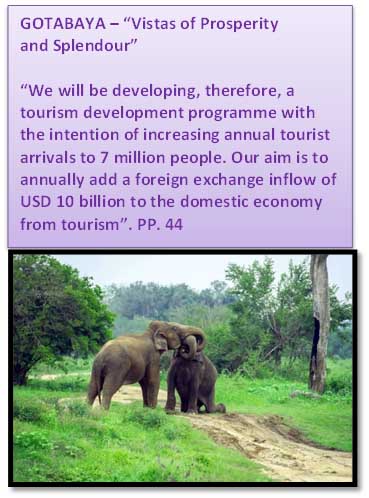
It has been clearly evident that the travel & tourism sector has been one of success industries in post-war economy of Sri Lanka. The industry’s growth has significantly contributed to increase the level of employment, foreign exchange earnings, government revenue and subsequently the economic growth of the country.
The National Policy Framework: Vistas of Prosperity and Splendour has clearly indicated People-Centric Sustainable Tourism Development. Itemphasizes the suitable initiations that can attract different types of tourists to the entire range of accommodation facilities from five-star hotels to those staying in people’s houses (homestays). Developing Sri Lanka Tourism as an environment- and domestic-culture-friendly industry with an Extensive People’s Active Participation is emphasised by the National Policy Framework (NPF) to ensure sustainable development of the industry. It is expected to increase Seven Million of International Tourist Arrivals to Sri Lanka.
Key Performance:
- Sri Lanka was ranked as the Top Best Destination Country for travel in 2019 by Lonely Planet
- The recovery of Sri Lanka Tourism has come back within between 5-6 month duration, though the Easter Sunday Terror Attacks could weaken the industry.
- Performance
of the Industry – Year 2019
- No of Tourist Arrivals = 1,913,702
- Tourism Income = Nearly US$ 3.6 billion
- No of Rooms = 38,908
- Average Daily Expenditure Per Tourist = Nearly US$175
- Average Duration of Stay of Tourists = 11 days
- Direct Contribution of Tourism to the GDP = Approximately 5%
- Tourism Employment = Around 440,000 jobs ; 5% of total employment of the country
- Most Vital Market Segments = Asia and Pacific became the largest source of tourist traffic to Sri Lanka with 56%; Top five international tourist generating markets: India, China, United Kingdom, Germany and Russia
Thrashing the Blooming Hopes of Sri Lanka Tourism:
The forecasted Global Economic Recession along with severe disruption of global travel due to the outbreak of COVID-19 Pandemic, Sri Lanka Tourism has been badly smashed and such bad effects will be continuing until the Virus is controlled.
Is Formal Tourism Doing Good?
- Based on the Sri Lanka Tourist Development Authority Data, following impacts can be highlighted as below:
No of Establishment and Direct Employment in the Tourist Industry
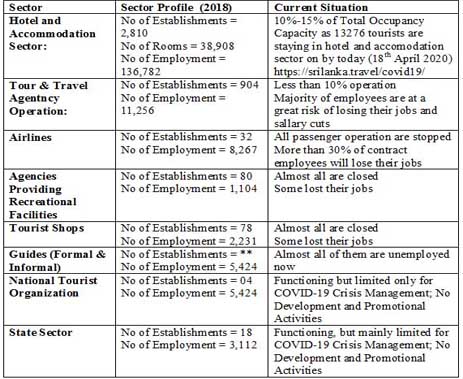
Tourist arrivals fell below over around 71,370 in March 2020, which is nearly 71% decline of tourist arrivals comparing March 2019.
The decline in tourist arrivals and consequently tourism revenues for Sri Lanka could further deteriorate. It may be due to that the major source countries are now worst hit by the COVID-19.
As of 71% of declining of tourist arrivals, the tourism income will go down further around US$ 1.2 billion or further (US$ 4 billion*0.3 as a simple calculation). However, this decline could also be underestimated when considering the total direct and indirect income generated from tourism industry to the nation.
A Brief Grip of the COVID-19 Impact Indication for Tourism Industry by 18th April 2020, developed through industry experts’ consultation:
Disproportionate Suffering of Indirect and Informal Sector of Tourism:
- According to the Annual Report of SLITDA (2018), indirect employment of the industry is 219484 jobs and it was more than 56% of total tourism employment.
- It is known that the informal sector of tourism industry is nearly 60% of the total contribution.
- On the basis of information gathered from industry practitioners and experts, the impact of COVID-19 on informal tourism sector is much more severe than that in the formal sector.
- The
higher percentage of informal sector contribution and nature of greater vulnerability
have created a deep severity in the negative impact of COVID-19 making the
informal tourism sector in danger. More
specifically, the employment of following informal sectors are highly affected
from the COVID-19. Consider that numbers given below are approximate:
- Tour Guides (5,424) Trained National Guides (1573) with Guides with renewed licensed working (1191); Chuffer (1295); Licence renewed (845); Registered Tourist Drivers (5800); Unregistered Tourist Drivers (4000); Safari Jeep (2300); Area Guides (1000); Site Guides (1000); Safari Boats (1000); Employees working in tourism related businesses such as Spice Gardens, Village Tours, Elephant Safari, Cinnamon, Tea, Gems & Moonstones, a Certain Percentage of General Taxi Drivers; Employees in SME and Micro Tourism Business and Unofficial Travel Agency Operation (1800).
- On approximate figure, nearly 350,000 persons who involved with tourism and hospitality industry in Sri Lanka are affected by the COVID-19. There may be minimum 1,000,000 family members are vulnerable if each one of these affected 350,000 needs to care of her/his two family members.
Covid-19 Pandemic: Not Merely a Threat
On the face of COVID-19 Pandemic, a country like Sri Lanka has also an opportunity to use this pandemic disaster to convert as a platform to redesign and redirect Sri Lanka Tourism to another Pinnacle of Global Tourism if it is properly managed with right strategic approach.
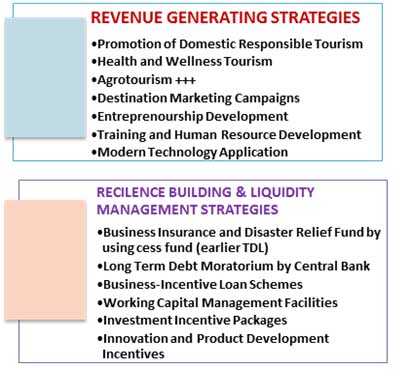
The severity and gravity of impact of the COVID 19 on tourism industry and whether its impact lasting for a long term or not will be depended on how well Sri Lanka Tourism handle this tricky situation with careful assessment in terms of effective response to the disaster and right direction of recovery through redesigning of tourism products, acute positioning and robust destination marketing, dedicated hospitality service offerings with outstanding heath care and safety services of the industry.
Strategic and Priority Thrust Areas
Most effective strategies and necessary actions on the Response and Recovery of Sri Lanka Tourism from the impact of COVID-19 Pandemic Disaster can be briefed herewith. This areas can be considered as the Strategic and Priority Thrust Areas with the important sectors of tourism industry for managing for response and recovery results:
Healthy Tourists and Health Tests
For successful Response and Recover Sri Lanka Tourism from Covid-19 Pandemic, all strategies are to be subjected to Healthcare Guidelines and Safety Tests. Government should implement new healthcare requirements to improve safety and confidence of both locals and tourists. For an instance, Minimum of two or three PCR tests can be done. More specifically, one health test must be done at the airport before entering in to the country. In addition, the required health guidelines must be provided to all stakeholders of the industry, including community members involved with tourists. Proper implementation and monitoring are to be carried out.
Subjected to above compulsory health and safety tests, key strategic and priority thrust areas in Financial Management for the Response and Recovery can be divided into two aspects broadly.
Ever-Trusted Saviour: Domestic Tourism
As clearly explained by the SLTDA (https://www.sltda.lk/domestic_tourism), development of domestic tourism will be one of the most strategic and priority thrust areas of Sri Lanka Tourism as a prompt response and effective recovery strategy. Along with on-going curfew and security process, development of business ethics and responsible behavior of domestic tourists should be created. Diversification of domestic tourism in different types of tour experiences at different market segments are instrumental to generate more attractions. Major contributions of Domestic Tourism can be highlighted as Bridging Seasonality Gaps, Distribution and Democratization of Tourism, Distribution of Income, Precursor to International Tourism Development and most importantly Shock absorber at the disasters like COVID-19 and Easter Sunday Attacks. This provides opportunities to promote Native Tourism, SME Tourism, Homestays and local entrepreneurship and to reduce the poverty & social disparity and so on.
Health and Safety: Most Saleable Tourism Attraction
Promotion of Health and Wellness Tourism for Senior Tourists unlikely to affect from economic downturn, unemployment since they are well covered for expenses via savings and pension plans especially in developed countries. Therefore, income receipts of 2020 for elders will be same as 2019 in most cases in developed nations. Long-stay tour packages can be promoted targeting coming this winter season for Australia and New Zealand whilst next winter season in Europe and North America.
Trust the Local Wisdom
Sri Lankan Indigenous medicine including Ayurveda and Siddha along with authentic cuisine and its related culture, different cultural practices, meditation, religious practices and rural life styles must be more attractive for senior tourists. Current positive image of controlling COVID-19 can be capitalized for promotional campaigns. Ayurveda treatments including spa and healthy local foods, more specifically, organic foods which improves health and immunity can be very successful tools in promoting long-stay tour packages as post-COVID 19 disaster tourism development efforts. Furthermore, at this pandemic disaster, Sri Lanka has experienced an increased demand for Local tea in international auctions.
Richer for Greener Tourism – Wealthier for Healthier Tourism

Sri Lanka will be enable to promote these healthy food ranges along with long stay packages better than ordinary times. Warm weather is also one of obvious reasons for Sri Lanka in terms of tourism promotion where the importance will be at its peak level amid COVID -19 risks. Medical Tourism, which is sub-sector health and wellness tourism can be promoted for different customers in international tourism.
Robust Marketing and Acute Positioning of Sri Lanka Tourism
Sri Lankan Authorities should do the necessary result-oriented marketing campaigns to promote tourism by using most effective tools and techniques with the support of modern technology and social-media.
We are one of the best
It is no doubt that Sri Lanka can also be promoted as one of the safest destinations for good health and safety”. Position of Sri Lanka Tourism in New markets and broadening the existing markets
Going with Global Goals: Most Powerful Driving Force for SL Tourism
Promotion of Sri Lanka Tourism with going with the SDGs and also with the applications of Sustainable Tourism Development will ensure higher competitiveness of the country’s tourism products at international level.
Knowledge is Ever Wining
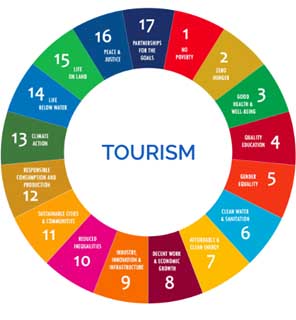
Entrepreneurship is the engine of growth and development of tourism. Providing a conducive environment for local entrepreneurship development is essential at this type of pandemic disaster. Local tourism entrepreneurship must be developed as a wide range of activities related to creating and operating tourist’s enterprises, growing in a sustainable manner via creative and innovative business approaches.
The industry must develop a strategic plan for human resource development with resilient employees to cope with this type of global pandemic. Creation of entrepreneurial new public service and maintaining efficient public administration is decisive to determine the success of recovering against COVID-19 pandemic.
Is Money-Creator Decisive for Controlling the COVID-19?
It is highly important to use appropriate Cost & Liquidity Management Strategies to rightly response and recover from this Virus Pandemic. In this context, the country’s financial authorities must provide financial assistance on following tasks:
- Business Insurance and Disaster Relief Fund by using cess fund (earlier TDL)
- Long Term Debt Moratorium by Central Bank
- Business-Incentive Loan Schemes
- Working Capital Management Facilities
- Investment Incentive Packages
Debt moratoriums are already given by the Government across the industries for 6 Months. However, tourism industry needs to be granted debt moratorium for long term since recovery seem to be delayed for tourism due to “social and physical distancing” requirements emerged amid COVID 19. Tourism industry will require long term Moratorium at least for 12 – 18 months considering industry specific recovery will be much longer than other industries. However banks are unable to extend moratorium for a period more than 6 months.
Continuity and sustainability of Debt Moratorium can create severe issues in the banking sector since banks continue to pay interests to deposits & other liabilities. If banking system gets into trouble by providing moratorium across industries, it will lead to number of serious issues in real economy.Already Non Performing Loans (NPA) are above 5 pct and it is likely to reach to a higher levels. It is very unlikely that banks will lend any further to sectors that are already in trouble. It can also create cash flow difficulties to banks as they are unable collect capital and interest on majority of its loan portfolio, while they continue to pay capital and interest to depositors. In such circumstance, following measures are recommended in order to address banking sector liquidity position and banks to lend to tourism sector that is in severe crisis:
- Further reduction of Policy Interest rates by Central Bank which will relieve the pressure on banks liquidity position as more cash is retained by banks which can then be converted to loans (current Standing Deposit Rate 6 and Lending Rate 7pct)
- Introduction of Asset Buying Program by Central Bank (monetary stimulus as Quantitative Easing). Current liquidity infusion is less effective as most banks do not hold excess government securities. Currently CBSL regular auctions is to improve liquidity only against government securities
- Asset buying program, if introduced, has to be tapered off over a period of 2- 3 years to mitigate the possible adverse impact to the economy due to high levels of monetary base.
Improvement of the Working Capital Refinance Facility of the Industry
Government has already given this concession across industries at 4% interest rate with specific grace period for Months of April – May 2020 working capital requirements. However, Tourism sector recovery seem to be long delayed and it will require working capital concessionary loans at least for next 7-8 months continuously.
Provision of Foreign Finance Facilities
Government of Sri Lanka has the opportunity to invite international lenders from China, USA and Europe to finance Sri Lanka’s tourism sector on an individual case basis. Euro Zone, USA and even Chinese Lenders have very limited lending options due to global economic slowdown amid COVID-19 which creates an opportunity for Sri Lanka tourism sector to seek existing debt absorption as well as medium term working capital financing. Government of Sri Lanka can be an intermediate partner creating platform in promoting special foreign financing from global lender as mentioned above by expediting approval process.
Financial Incentives for Continued Tourism Employment
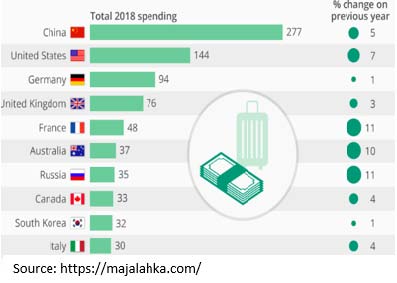
It is very important to keep employment within the industry and Government can pressure employers to keep continue with their employees even at reduced salary levels. Further, Government can put a condition where concessionary finance facilities will only be offered to “organization who continue with its work force with zero job cuts”.
China: One of the Most Valuable Saviours for Sri Lanka Tourism
China was the first country to get recovered from COVID – 19. Further, Chinese Government is in to the process of opening up its industries step by step at this moment. It indicates that china will be fully operative and its people will be free to mobilize by the end of May 2020. Chinese outbound tourists are the no 01 outbound travel spenders in the list with US$ 277 Billion market size as of 2018. Chinese economy will revive back in near future whilst most of tourists’ attraction in Americas, Europe, Africa and Middle East are remain closed. Therefore, Sri Lanka will have a great business opportunity in next couple of months.
On the other hand, after months of locked down Chinese would love to travel to a safe country and Sri Lanka can be the preferred destination for Chinese. It means that Sri Lanka will be able tap the most biggest tourist outbound generator of the world, which is big as more than USD 50 Billion market even if the worst case scenario, compared to USD 277 Billion market size in 2018.
Even if Sri Lanka capture 5% of Chinese outbound tourism, it can gain us more than USD 2.5 Billion in next 12 months from May 2020 to June 2021.
Sri Lankan Government has a vital role to play at this situation where coordinated diplomatic effort will be essential to capture this market share. Unlike ordinary times, Chinese Tourists will have very limited options since most of Americas, Europe and Middle East countries are remain closed.

Moreover, Chinese tourists may not be welcomed by several countries in Europe and America due to ongoing COVID -19 disputes where the President of USA is openly criticizing Chinese Government. Therefore, the current situation present a great opportunity for Sri Lanka to capture the world’s highest market through well-focused promotional strategies.
On the other hand, India as the highest tourist generator to Sri Lanka Tourism, it has a great potential to revive our industry. At present, it seems that a significant no of Indians are willing to stay in Sri Lanka until COVID 19 is finished.
Discipline is One of the Best Tools for Sri Lanka Tourism to Grow
Finally, this disaster-recovery endeavours can be utilized to regularize the informal tourism sector or take them into mainstream of the industry for a better improvement of small and micro level tourism business operation while minimizing its negative impact to the development of the industry.
Don’t be misled for the meaning of Discipline and Democracy
Maintaining a commonly agreed certain discipline in business operation and following the professional code of ethics in tourism industry would determine how fast and to what extend the industry can reach its growth and development.
Let’s use this disaster as a disguised messenger to make our industry with right disciplines in its business operation then the development of our industry will be ensured with making right meaning for So Lovely Sri Lanka.


